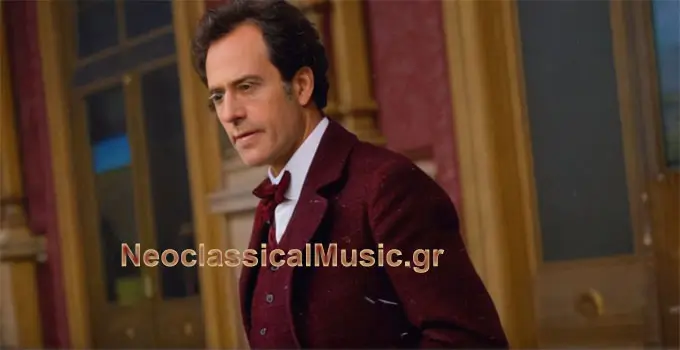Gustav Mahler – Das klagende Lied: Dritter Teil. Hochzeitsstück
Gustav Mahler – Das klagende Lied: Dritter Teil. Hochzeitsstück

In his early twenties, Gustav Mahler started work on an impressive project that would set the tone for the intense emotional themes of his symphonies. Completed in 1880 but later revised, Das klagende Lied stands as his first major orchestral composition. The third part, known as the Hochzeitsstück or ‘Wedding Piece’, reveals the dramatic narrative’s final act and represents the young composer’s desire to combine music, poetry and theatre into a unified vision. Although Mahler eventually refused to allow the work to be performed during his lifetime, the Hochzeitsstück has kept listeners fascinated as an early insight into the complex imagination of one of the most profound artistic minds of the modern era.
The tale at the heart of Das klagende Lied originates from a folk legend that Mahler himself adapted. It tells of two brothers who both long for the hand of a beautiful queen. She declares that she will marry the one who finds a red flower hidden deep within the forest. The younger brother succeeds, but is murdered by the elder, who takes the flower as his own.
Later, a wandering minstrel finds the youth’s bone and makes a flute from it that sings of the crime. During the wedding feast, this strange instrument becomes the vehicle of revelation, bringing the guilty brother to ruin and turning the celebration into a scene of tragedy. The Hochzeitsstück is therefore not just a joyful ending, but a terrifying vision of a celebration overtaken by the voice of truth and vengeance.
Mahler’s score captures this duality with remarkable boldness. At first, the listener is drawn into a celebratory atmosphere. The music evokes trumpets and dancing, creating a sense of royal celebration, as though the hall is filled with lords and ladies. But even within these seemingly joyful moments, there is an underlying sense of threat. Harmonies suddenly shift and the orchestration is full of sharp contrasts. The young composer was already a master at suggesting that beauty may conceal darkness, and that glory may conceal violence.
The defining moment comes when the flute made from bone starts to play. Mahler’s treatment of this symbol is remarkable. The tone, which should be delicate and pastoral, becomes strange and charged with accusation. The story of the crime is revealed through the voices of the chorus and soloists, exposing the elder brother before the entire gathering. What began as a wedding march dissolves into a scene of horror where the truth becomes apparent with irresistible force. Mahler’s musical setting of this revelation anticipates the sudden tonal shifts in his later symphonies that reveal the darkness beneath human existence.
The Hochzeitsstück also demonstrates Mahler’s early exploration of the relationship between folk material and large-scale composition. The medieval tale is filled with symbols of quests, treachery and supernatural justice. However, Mahler broadens its meaning, turning it into a meditation on the fate of innocence in a corrupt world. The truth is voiced through the music itself, represented by the flute made from a bone, which suggests a strong belief in the ability of music to reveal hidden truths. Even at the beginning of his career, Mahler saw art as a judge, prophet and witness.
The alternation of elements of celebration and tragedy gives the piece the feel of a stage drama rather than a purely symphonic structure. At this stage in his life, Mahler may have been seeking to create a kind of music drama that was separate from opera but equally dramatic. Although he later embraced the symphony as his true calling, the theatrical spirit remained with him throughout his career, reaching its earliest and most daring expression in the Hochzeitsstück.
The orchestration of this particular section is extremely impressive. Mahler uses massive forces, including an expanded wind and brass section, and experiments with offstage ensembles to create a sense of space. These devices, which would become signature features of his later works, serve the narrative directly here. The offstage sounds create the impression of distance and memory, as though the murdered brother is calling from beyond. The interplay between the on-stage voices and the unseen offstage ones creates the impression that the worlds of the living and the dead are overlapping during the wedding feast.
Although brilliant, Mahler himself remained dissatisfied with Das klagende Lied. He revised the score several times, eventually removing the first part and leaving only two movements for performance. Perhaps he felt that the original’s youthful extravagance revealed his intentions too openly. However, for contemporary listeners, the complete three-part version, including the Hochzeitsstück, provides priceless insight into the beginnings of his artistic journey. The extremes of light and darkness, joy and despair, which would be developed in the symphonies that followed, are already present.
Reflecting on this early work, we recognise the qualities that would come to define Mahler’s mature style: his fearless approach to the subject of mortality, his use of music as a vessel for the truth, and his belief that even the most joyful celebrations may conceal despair. Although the Hochzeitsstück was born from a youthful imagination, its message resonates with an eternal power. It is a vision of music as revelation; a wedding feast transformed into a trial; and an early testament to the genius of a composer who tried to express the deepest contradictions of human existence through sound.


